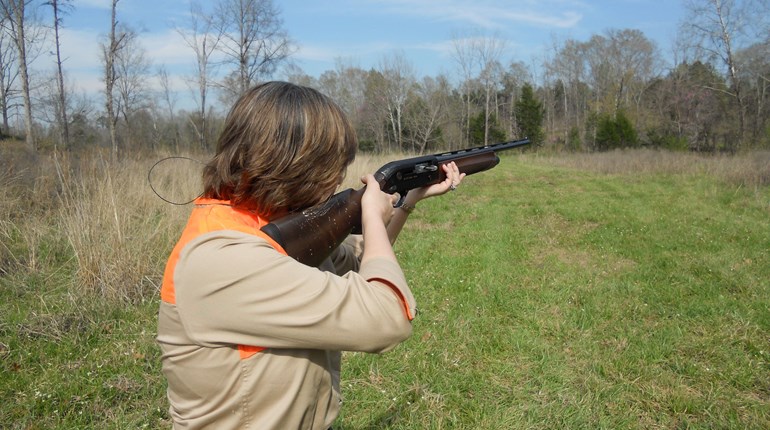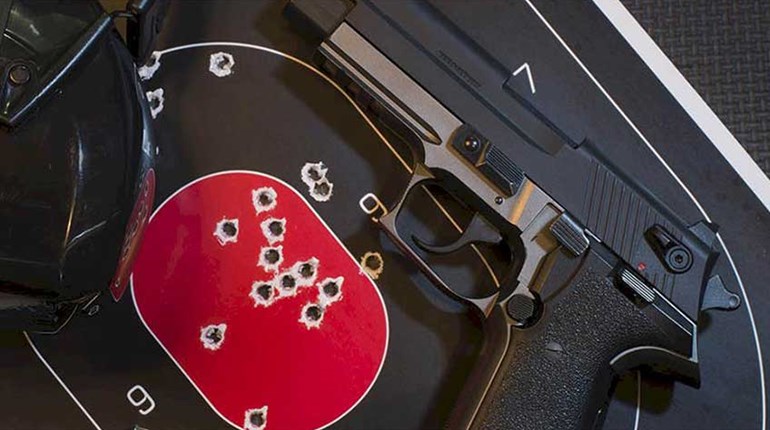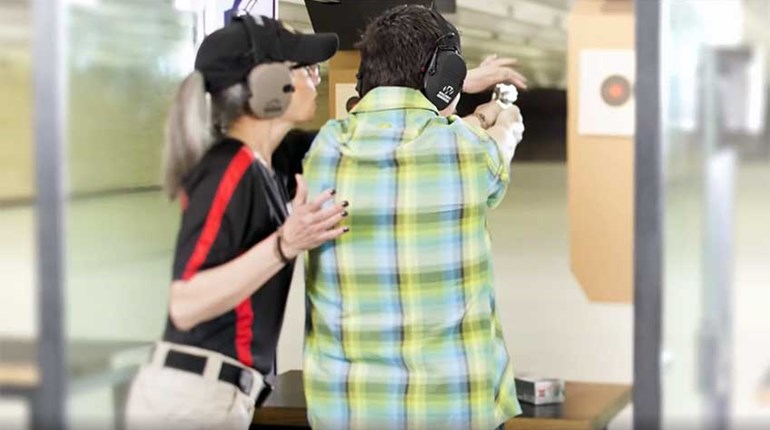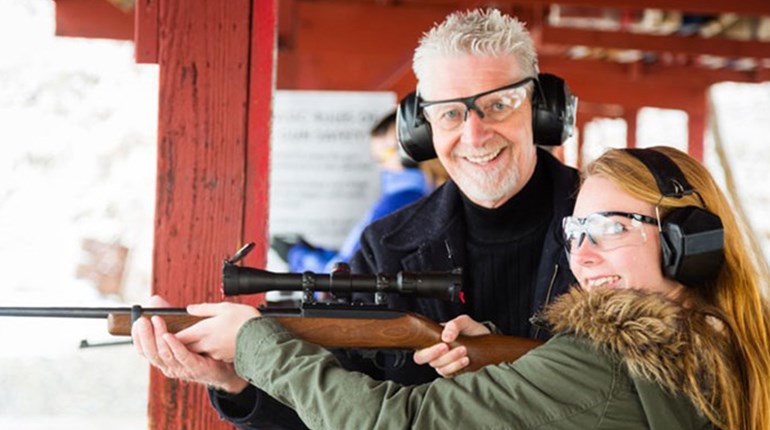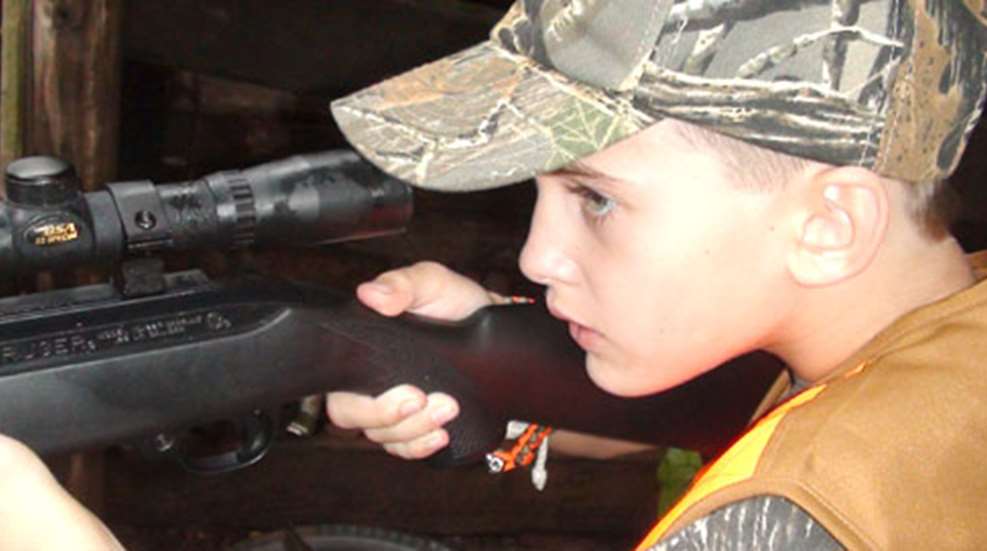
It’s a big decision and an exciting one, for both you and your child, as you ponder that first gun. No doubt the passion for the outdoors has been lit from shared days afield and maybe even at the range, but now it’s time to extend the ultimate in trust and responsibility by purchasing a gun and giving it to your child as his or her designated gun to take afield with them.
I still remember my first gun, a used Remington Sportsman 58 that my dad gave me when I was 11 and that I used to down untold bushy tails with 2 ¾-inch loads of No. 6s—as well as my first whitetail, firing No. 1 buckshot, a year later. I grew up hunting deer in an area where shotguns—mostly buckshot—are still the firearm of choice, so when I received a brand new Remington 1100 for my 16th birthday, opening the box is a moment I will never forget. For a young, avid hunter, it would become one of my most prized possessions, alongside my first car and first home. The car and home are little more than good memories now. I still own, and use, that 1100.
So what are the critical considerations in buying that first gun for your son or daughter? There are several that are key as you want the gun to become an enjoyable tool to help them not only become better marksmen, but to maintain the enthusiasm for shooting and hunting for many years to come.
What Caliber?
Maybe you’re an avid waterfowler and you want a shotgun for your young one so he or she can join you in the marsh. Or maybe you’re a whitetail hunter and want something for your kid that will deliver a knockout blow.
“The first thing you want to avoid is to not overgun your kid,” said Virginia Beach, Va., gunsmith Kurt Derwort. “You try to give an 8-year-old kid a .308 or some blowaway magnum and it’s going to be too much. It will just make the child recoil shy and that’s the worst thing you can do to a kid.”
Not only will it hamper their ability to become accurate, but it may chase them away from the sport before they’ve even really had the chance to get into it, according to many experts.
“Every time they shoot, they’ll be thinking, ‘this gun is going to kick the heck out of me,’ and if that thought is on their mind, they’ll never be able to shoot accurately.”
Like any other recoil-shy shooter, a kid will raise his head as he squeezes the trigger or begin moving it away from his shoulder the second he shoots in order to escape the anticipated pain. It’s human nature.
Developing good shooting form and marksmanship should be the ultimate goal for any new shooter/parent team, and with that in mind, Derwort says the only way to go is with a .22.
“Starting with a .22 is the best way to teach a person marksmanship,” said the former U.S. Navy armorer. “I can work with them to teach them trigger control and the basics of shooting without recoil being a factor. As soon as they can hit a target reliably at 50 yards, they will have no trouble hitting deer-sized vitals at 100 yards.”
From there, shooters can move into calibers or gauges better suited for the game they will most often be pursuing.
If your young shooter has received more than ample range time behind a rimfire and is ready to graduate to something more suited for game larger than squirrels and rabbits, just be sure the gun is still light recoiling. A good first deer rifle will be chambered in .243 and an ideal first shotgun for any purpose is a 20 gauge.
Why not the .410, a common choice for young shooters just a generation or two ago?
“It only has three pellets of buckshot or one small slug with weak energy,” said Derwort. Even if shooting small game loads, the payload is limited and stacked, leading to poor shot strings and limited patterning.
Loaded with reduced recoil or low-brass loads, a 20-gauge delivers better performance across the board and allows hunters to grow into it and make use of it for a much longer period of time.
Action Considerations
As a first gun, many parents automatically choose a single shot—sometimes because it is more affordable, but also because it is perceived as safer. There is only one shot loaded at a time, so there’s no chance for an accidental follow-up shot by a still-learning shooter. But single shots also tend to deliver more recoil than semi-autos and limit the shooter from that sometimes-necessary follow-up shot when hunting.
“Where shotguns are concerned, I fall between the semi-auto camp and those people who prefer a single shot,” said Derwort.
A pump, he explains, still requires manual action to bring the gun back to battery, but allows for needed follow-up shots. On the rifle-side, the beloved bolt-action serves the equivalent balance of manual loading and secondary shots as a pump in the shotgun world.
As ARs become more popular, a growing number of shooters are suggesting them as a great first or youth gun because six-position stocks can be adjusted to fit a shooter on the spot, the semi-auto action minimizes recoil and the typical .223 chambering is a light enough load for most young shooters to handle (yet is still illegal for deer in many areas).
An avid tactical gun shooter, Derwort doesn’t completely agree with this line of thought.
“The AR is a great platform to start a kid out, but not for a first gun,” he said. “I would hesitate to give an AR to an 8- or 10-year-old kid. Kids should learn to shoot and make each shot count first before squeezing off multiple rounds, which is the tendency with an AR.”
Once a young shooter has mastered the basics however, Kurt does like some of the versatility an AR can deliver including .22 rimfire conversion kits that allow a kid to use one for affordable plinking before moving up to .223 to learn better muzzle control and recoil management. After that, the upper can be swapped out to .300 Blackout for .30-30 like ballistics out to 200 yards or even 6.5 SPC, which makes it a legitimate deer gun.
Pick a Gun That Fits
As vital as selecting the right gauge or caliber is ensuring the gun properly fits your young shooter. Adult-sized guns often have a length of pull at around 14 to 14 ½ inches, approximately 2 inches too much for smaller stature shooters. Fortunately, there is a large selection of specially made youth-sized firearms that shave that length down to roughly 12 inches. When a gun fits a shooter better, he or she can better develop shooting form. Shotguns such as the Remington Model 11-87 Youth Compact or Mossberg’s 500 Super Bantam allow for stocks to be adjusted to fit, even as your small shooter grows. These guns offer some of the best value since a new gun doesn’t have to be purchased within a few years. Where suitable youth models don’t exist, alternate-sized stocks can usually be purchased and easily swapped out.
Keep these key considerations in mind when looking for that important first gun for your son and daughter, and you can bet that you’ll be sending them properly down the path of a lifetime of shooting and hunting fun.












